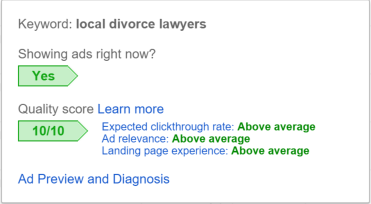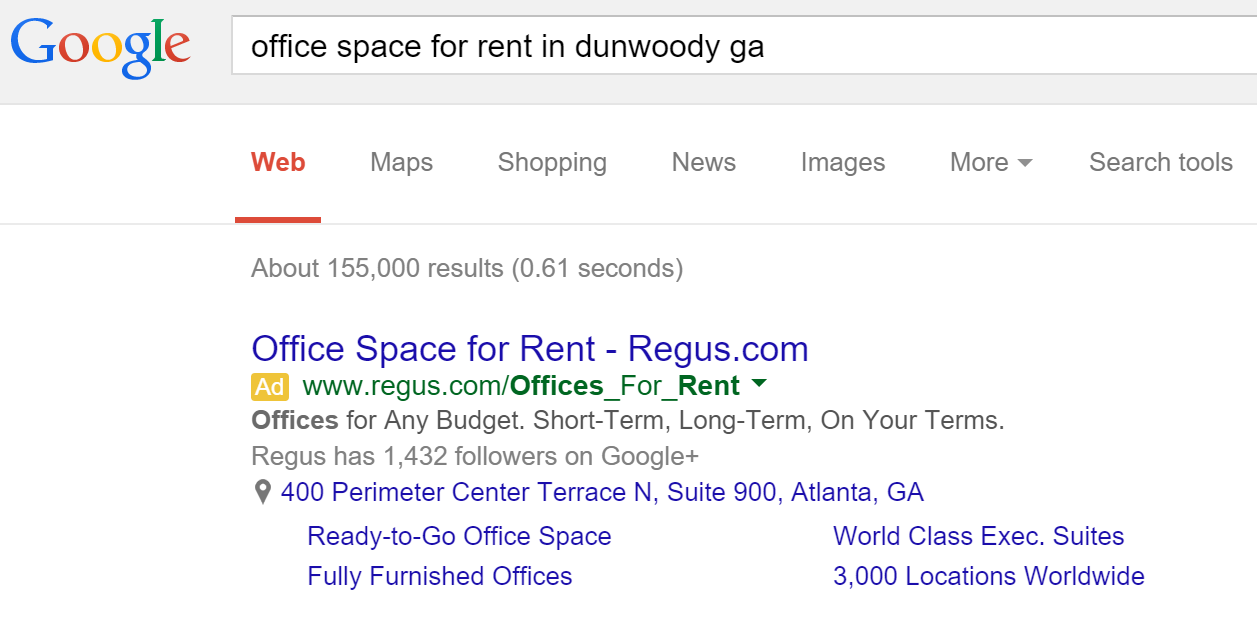The Secret To Keeping PPC Costs Low
Okay, so maybe it’s not a secret, per se… But earning (and maintaining) a high quality score is the key element in keeping CPCs low; and it can be significantly more difficult than you may think.

While Google uses several metrics to calculate each keyword’s quality score, in this article I’ll discuss the one thing that I’ve found to have the most profound impact on earning high quality scores. Then, I’ll provide a simple starting point for how we can start achieving higher QS in our accounts today.
WHAT IS QUALITY SCORE?
Quality Score (QS) is a metric that Google assigns to each keyword in your account. It’s calculated based upon 3 elements:
- Expected Clickthrough Rate
- Ad Relevance
- Landing Page Experience
Each of these variables is given a score of “Above Average,” “Average,” or “Below Average.” Then, based upon the combined scoring of each of the 3 elements, Google assigns a QS to your keyword from 1 to 10, with 10 as the highest.
Not to go into too much detail here, but the reason you want to achieve a high QS for each keyword in your account, is because QS plays a huge role in AdRank which has a direct impact on CPC, Ad Position, and Impression Share. And each of those things has a dynamic impact on Conversions and overall Cost Per Acquisition.
So, yeah. Quality Score is kind of a big deal.
Expected Clickthrough Rate Is the Key
In my experience of optimizing ad groups and keywords for high QS, Expected Clickthrough Rate is the one element to rule them all. That makes sense because the other two elements are pretty straightforward. Ad Relevance is just making sure that your ad talks about the same thing as your keywords, and Landing Page Experience is making sure that the ad copy is fleshed out for the searcher once they click on your ad. Simple.
Expected Clickthrough Rate is the ambiguous factor that Google uses to allow for wiggle room in handing out QS. Of course, Google has to retain some element of mystery so that achieving high QS doesn’t become a simple equation that can be easily figured out by insightful account managers. But who is setting these mysterious expectations before my account builds a significant history? Whose expectation is used while the account is being built?
What if when I sit down for dinner with my family tonight, I announce to my wife that my Expected Satisfaction of her cooking has already been determined? Or that my Expected Appreciation of my birthday gift has already been calculated, and I’m only going to give her a 6. You don’t know my wife, but let’s just say that it wouldn’t end well for me.
In that same way, Google assigns a QS to your keyword as soon as you enter it into an ad group. Thankfully though, after your keyword begins to get impressions and clicks and an actual Clickthrough Rate is calculated, your QS begins to rise or fall based on the new data with actual results.
So How Do We Do It?
All of this is great information, but how can we start working towards a higher Clickthrough Rate which will give me higher QS?
I’m glad you asked. While there are several ways to structure accounts to achieve a high Clickthrough Rate (and, thus, a higher QS), I want to share the one that I’ve been taking advantage of the most lately. Surprisingly, this tactic takes place before keywords are finalized, ads are written, or landing pages are designed. It happens during the initial research phase of the client relationship.
When I begin to map out a PPC strategy for a new client, a standard practice for me is to perform a few Google searches for keywords that are relevant in the client’s industry and look for areas of weakness in my competitor’s PPC campaigns. I’m looking for areas of detail that my competition has either overlooked or cut corners and left out completely.
Look at the image below as an example:

Regus is the largest PPC competitor in the office space rental market around Atlanta, and we have a client looking to compete with them in this space. At an initial glance, Regus is obviously doing some things right with their PPC account. Their ad is showing in 1st position, they have multiple extensions that are displaying, and Google has even awarded them additional real estate on the SERP for their sitelinks. Well done, Regus.
But notice several areas of weakness with this ad. First, I searched “office space for rent in dunwoody ga,” but the ad doesn’t mention anything about Dunwoody, or even Atlanta for that matter. Which means that Regus probably runs this same ad in every market throughout the U.S., with a different locations extension for each major city. It’s hard for one ad to provide the same level of detail to a searcher in Atlanta as it does to a searcher in Seattle.
A second area of weakness that I notice is that one of the sitelinks reads “3,000 Locations Worldwide.” That’s a great piece of information, but I’m not looking for office space in Africa. I’m looking for office space in Dunwoody. We can reasonably expect that this particular sitelink will get almost no clicks for our search term, and will result in a lower Clickthrough Rate for our keyword.
Lastly, the third area of weakness that I noticed is the type of extensions that are showing. Admittedly, Google chooses which extensions to show and when to show them. So perhaps Regus has all of their extensions ready to display, but Google is choosing these specific extensions for this particular search. However, two extensions that would likely perform at a much higher level are Callout Extensions and a Call Extension. Why would Regus tell people how many followers they have on Google+ instead of using that same space to display additional features and benefits?
Most of the time in life, it’s the little things that matter. The PPC world is no different. Take time to explore your competition and look for areas of weakness in their ad copy that you can exploit, get clicks at a higher rate, earn a higher QS, and ultimately pay less for more conversions. That weakness might be profound (such as not utilizing a Display URL) or more detailed (such as sitelinks and Call Extensions), but every little element matters when looking to earn high Quality Scores.



